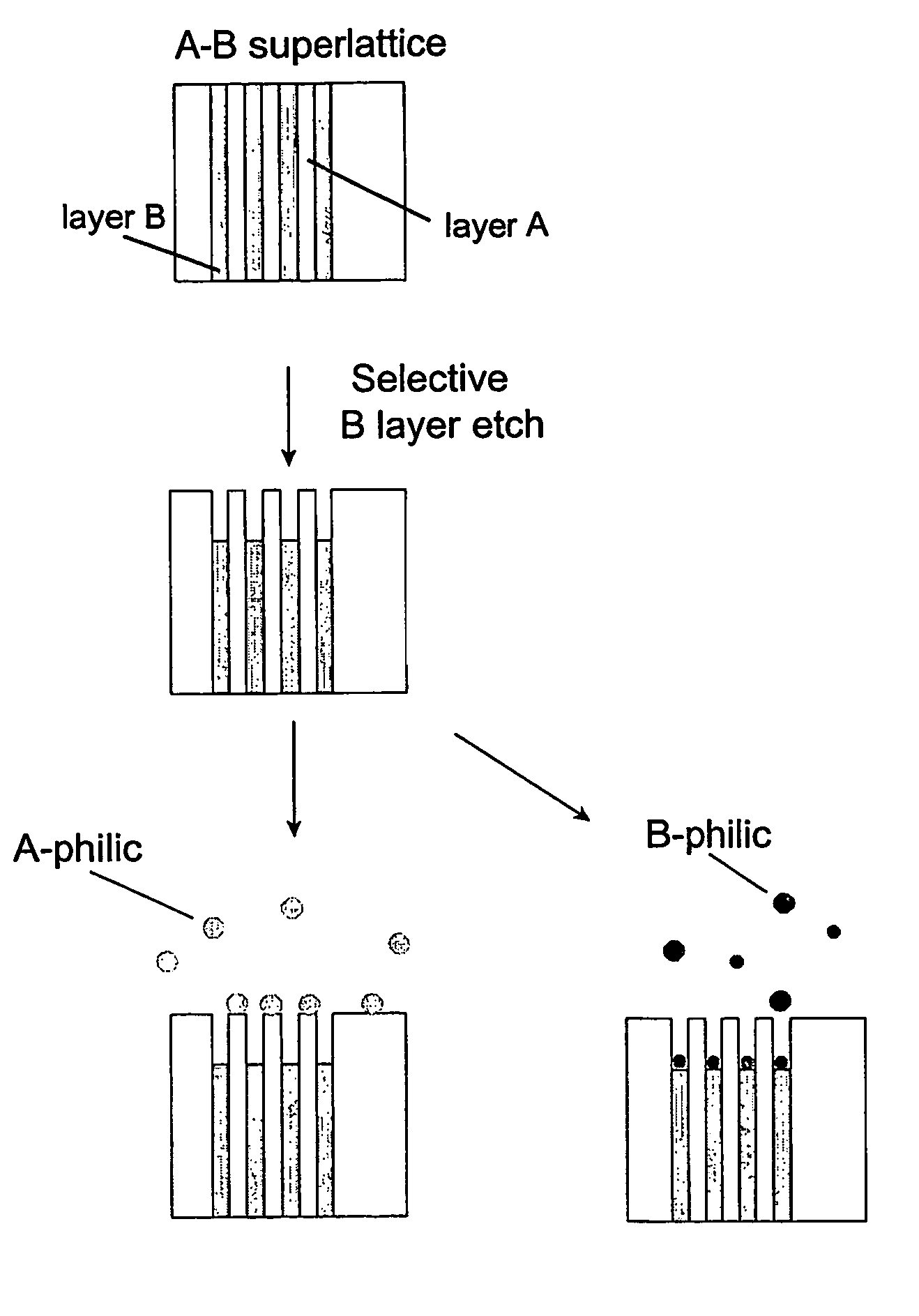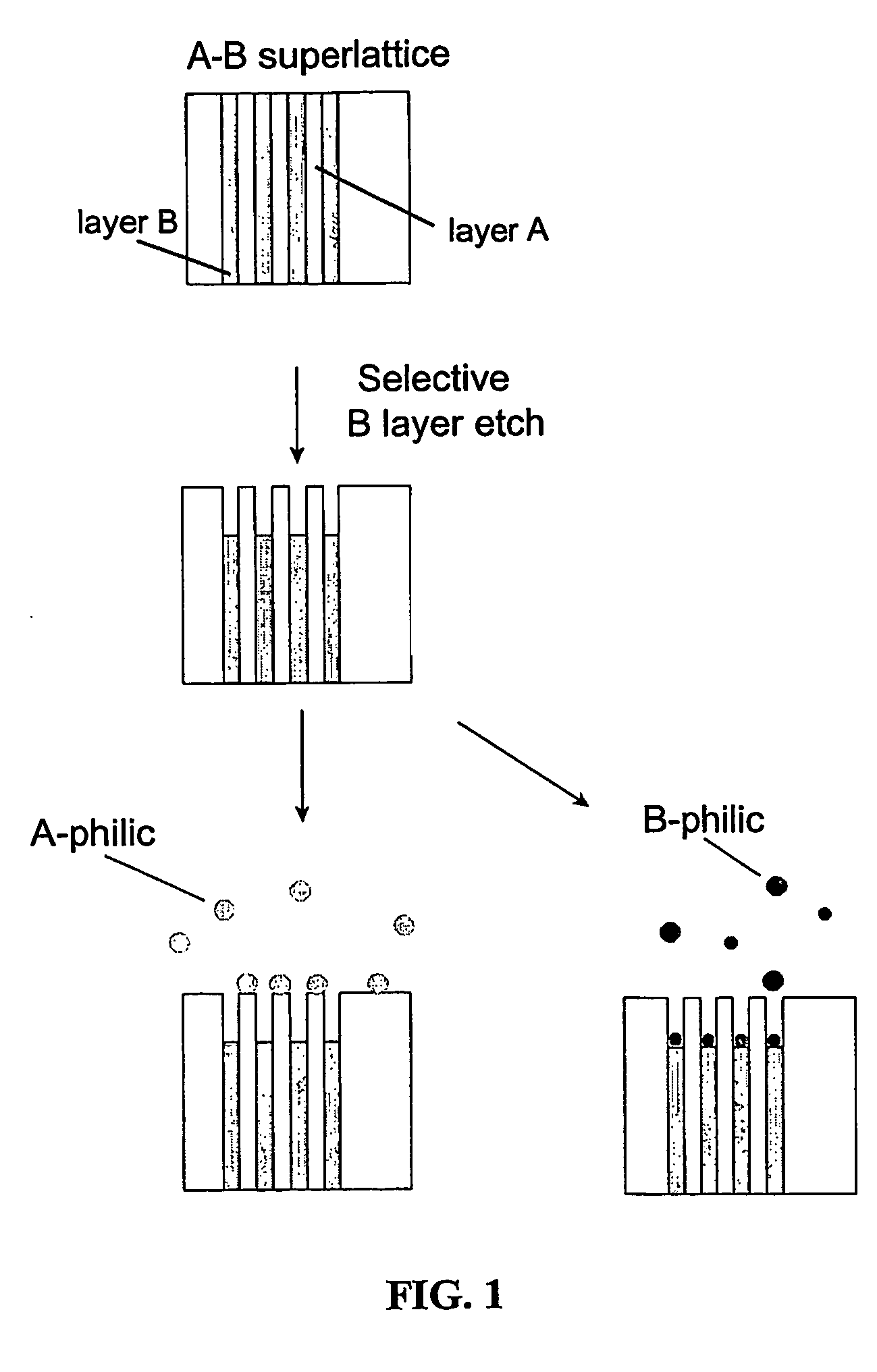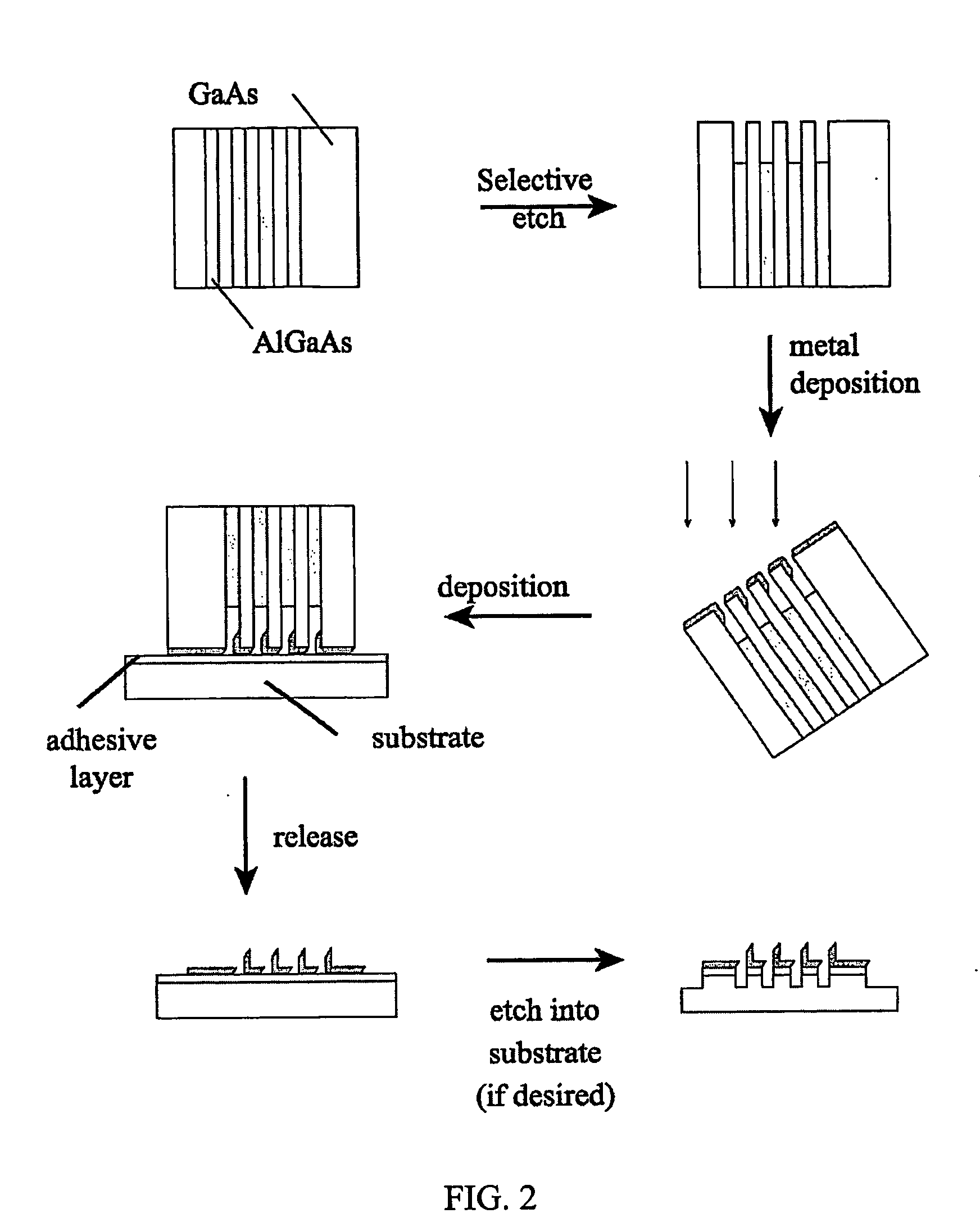Superlattice nanopatterning of wires and complex patterns
- Summary
- Abstract
- Description
- Claims
- Application Information
AI Technical Summary
Benefits of technology
Problems solved by technology
Method used
Image
Examples
Embodiment Construction
Definitions
[0031] A ‘superlattice’ is defined as a stack of alternating layers of non-identical materials. This includes, but is not exclusive to, semiconductors, metals, insulators, organic and ceramics. The superlattice may have several different types or composition of layers, with a minimum of two.
[0032] A ‘master’ is a pattern or template that is used repeatedly to pattern other surfaces. A rubber stamp is an example of a master, used to repeatedly transfer an ink pattern to a paper substrate.
[0033] Thicknesses of GaAs / AlxGa1-xAs (0.5<x<1) layers are labeled as xx / yy nm, denoting xx nm wide GaAs layers alternating with yy nm wide AlGaAs layers. The same notation will be used for the width of the deposited wires and the spaces in between. Thus, 10 / 20 nm Pt wires denotes 10 nm wide Pt wires with 20 nm space between each wire, for a total center-to-center distance of 30 nm. The ‘pitch’ of a set of wires is then defined as the center-to-center distance of each wire.
Superlatti...
PUM
| Property | Measurement | Unit |
|---|---|---|
| Width | aaaaa | aaaaa |
| Width | aaaaa | aaaaa |
| Width | aaaaa | aaaaa |
Abstract
Description
Claims
Application Information
 Login to View More
Login to View More - R&D
- Intellectual Property
- Life Sciences
- Materials
- Tech Scout
- Unparalleled Data Quality
- Higher Quality Content
- 60% Fewer Hallucinations
Browse by: Latest US Patents, China's latest patents, Technical Efficacy Thesaurus, Application Domain, Technology Topic, Popular Technical Reports.
© 2025 PatSnap. All rights reserved.Legal|Privacy policy|Modern Slavery Act Transparency Statement|Sitemap|About US| Contact US: help@patsnap.com



